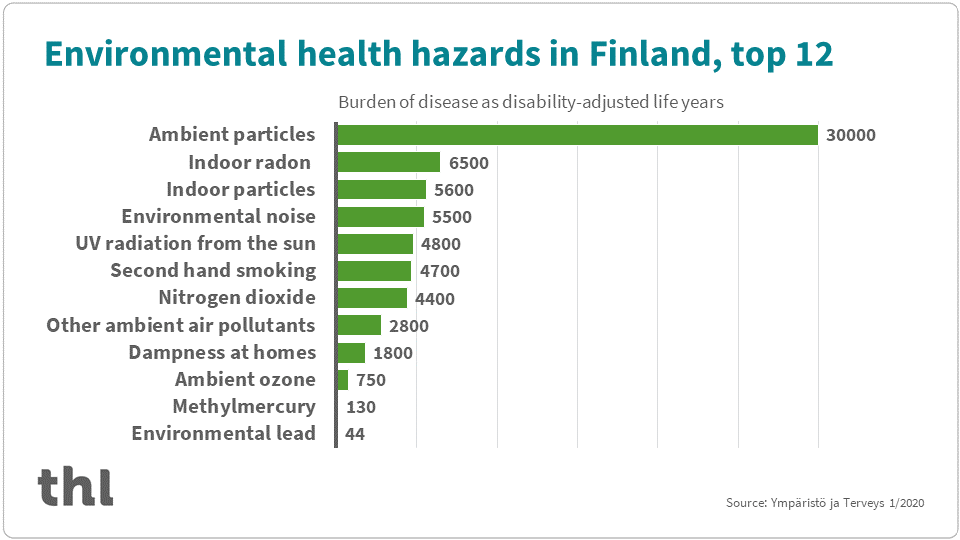Risk assessment
Risk assessment refers to a process which helps to ascertain if a specific factor that is harmful to health might endanger human health, causing a health hazard. This page explains risk evaluation with a special focus on environmental exposure agents.
Exposure agent, or factor that causes harm
When evaluating health hazards posed by environmental factors, an exposure agent refers to the factor in the living environment suspected of posing a risk to health. Different kinds of environmental exposure agents may include, for example, traffic emissions, noise, hot weather, microbes in water, or environmental pollutants. Exposure to more than one factor at the same time is possible.
There is more information on various environmental exposure agents on other THL websites:
The risk assessment process
The process of risk assessment can be divided into four phases.
- Identifying and describing factors that are harmful to health
- Establishing the extent of human exposure to them
- Evaluating the magnitude and likelihood of the risk to health
- If necessary, assessing how the risk to health can be reduced
As risk assessments are used in supporting risk management and decision-making, the assessment process should be based on scientific information.
Harmful effects, methods of exposure, and the mechanisms of harmful effects are not always known well. In such cases, risks need to be evaluated based on available information.
1. Describing harmful effects or identifying hazard
- Examining the possible health hazards that an exposure agent can cause
- Identifying the so-called critical effect, or health hazard, that eg. emerges at the lowest possible exposure level
- Identifying the dose-response relationship for critical effects, or establishing the exposure level at which harm may occur
2. Assessing exposure
- Examining the possible sources of exposure in the environment
- Identifying the possible routes of exposure for humans (ingestion, inhalation, absorption through the skin)
- Identifying who is exposed and if some groups of people are especially sensitive to the exposure agent
- Assessing the level of exposure
3. Assessing the risk to health
- Comparing the assessed exposure level with an exposure level known to be harmful
- Evaluating the safety margin between the assessed exposure level and the level known to be harmful
- Drawing a conclusion on the risk to health, describing the nature of the risk, and who it applies to
4. Risk management
- Examining if risks can be managed through measures such as preventing or reducing exposure
- Management measures can be initiated even if the mechanisms of the harmful effects are not known
- An evaluation of effects can be made to support decision-making
- Risk communication helps in sharing information on risks and on avoiding them
Burden of disease helps to compare different kinds of health hazards
Comparing health hazards can be challenging. Which is more harmful to health – one additional case of cancer in a year, or 200 000 people suffering from insomnia caused by noise every night?
Burden of disease makes it possible to compare harmful effects and add them together. In addition to the frequency of a health hazard, the duration and seriousness of the harm to health can also be taken into account.
Read more: Ympäristöaltisteiden kansanterveysvaikutukset (Ympäristö ja Terveys 1/2020, in Finnish)

Instructions for preparing for disruptions and crises have been compiled in the Suomi.fi online service. The guide for the entire population contains information and instructions to help you prepare in advance for various incidents and crises and emergency conditions in advance.




